John Donne’s poem Go and Catch a Falling Star is a witty and satirical poem about the impossibility of finding a truly faithful woman. The poet begins with a series of impossible tasks, like catching a falling star, finding a mandrake root that makes someone pregnant, or hearing mermaids sing. These are all supernatural or unrealistic things, just like finding a woman who is completely faithful.
The poet then sarcastically suggests that even if someone searches the whole world and lives a long life, they will never find a woman who has always been true. If, by chance, someone does find such a woman, the poet requests to be informed. However, he immediately contradicts himself, saying that even if she were faithful when found, by the time he reaches her, she will have already changed.
The poem reflects Donne’s cynical view of love and women’s loyalty. It is written in a playful and humorous tone, but it also expresses deep disappointment. The poem follows a rhythmic pattern, making it enjoyable to read. Donne uses exaggerated comparisons and irony to make his point strongly.
MCQs on Go and Catch a Falling Star by John Donne
Multiple Choice Questions (MCQs)
1. What is the main theme of the poem Go and Catch a Falling Star?
a) The power of love
b) The impossibility of finding a faithful woman
c) The beauty of nature
d) The importance of loyalty in friendships
Answer: b) The impossibility of finding a faithful woman
2. Which literary device is most prominently used in the opening lines of the poem?
a) Simile
b) Metaphor
c) Hyperbole
d) Personification
Answer: c) Hyperbole
3. What does the poet compare finding a faithful woman to?
a) Discovering a new land
b) Catching a falling star
c) Seeing a ghost
d) Finding a golden apple
Answer: b) Catching a falling star
4. The phrase “Get with child a mandrake root” refers to:
a) The difficulty of fathering a child
b) A supernatural and impossible task
c) The magical properties of mandrakes
d) A warning about forbidden love
Answer: b) A supernatural and impossible task
5. What is the tone of the poem?
a) Romantic and hopeful
b) Angry and aggressive
c) Satirical, bitter and cynical
d) Joyful and celebratory
Answer: c) Satirical, bitter and cynical
6. The speaker suggests that even if a faithful woman were found, she would:
a) Eventually betray someone
b) Die young
c) Be locked away forever
d) Lose her beauty
Answer: a) Eventually betray someone
7. The poem’s structure follows which rhyme scheme?
a) ABAB
b) AABB
c) ABABCCDDD
d) None of the above
Answer: c) ABABCCDDD
8. What does the “falling star” symbolize in the poem?
a) A guiding light
b) Lost hope and the impossibility of finding true faithfulness
c) The beauty of the night sky
d) The rise and fall of power
Answer: b) Lost hope and the impossibility of finding true faithfulness
9. Which of the following is NOT mentioned as an impossible task in the poem?
a) Hearing mermaids sing
b) Finding where past years have gone
c) Walking on water
d) Finding a wind that favors an honest mind
Answer: c) Walking on water
10. The phrase “envy’s stinging” suggests the speaker’s:
a) Pain from betrayal
b) Joy in relationships
c) Confidence in love
d) Faith in loyalty
Answer: a) Pain from betrayal
11. What does the speaker claim about a woman’s fidelity in the last stanza?
a) A woman can be true and fair forever
b) A faithful woman is possible but rare
c) Even if she is faithful at first, she will eventually cheat
d) He has found a faithful woman
Answer: c) Even if she is faithful at first, she will eventually cheat
12. The poem belongs to which literary period?
a) Anglo-saxon
b) Romantic
c) Metaphysical
d) Modernist
Answer: c) Metaphysical
13. What does “Ride ten thousand days and nights” symbolize?
a) A long and impossible journey
b) A punishment for sin
c) The passing of seasons
d) The speaker’s love for traveling
Answer: a) A long and impossible journey
14. What is the function of the speaker’s exaggerated claims?
a) To add humor and irony
b) To highlight the beauty of women
c) To show admiration for faithfulness
d) To depict the dangers of adventure
Answer: a) To add humor and irony
15. What kind of poem is Go and Catch a Falling Star?
a) A sonnet
b) A metaphysical poem
c) A ballad
d) An elegy
Answer: b) A metaphysical poem
16. The imagery of mermaids in the poem represents:
a) Beautiful yet dangerous women
b) The power of the ocean
c) Love and devotion
d) The importance of magic
Answer: a) Beautiful yet dangerous women
17. What does the speaker imply about women in general?
a) They are always honest and faithful
b) They are loving but weak
c) They are incapable of being loyal in relationships
d) They should not be trusted with secrets
Answer: c) They are incapable of being loyal in relationships
18. What does the speaker suggest about honesty?
a) It is rewarded in the end
b) It is impossible to find
c) It is the key to happiness
d) It is only found in friendship
Answer: b) It is impossible to find
19. What is the main contrast in the poem?
a) Hope vs. cynicism
b) Love vs. power
c) Beauty vs. intelligence
d) Faith vs. religion
Answer: a) Hope vs. cynicism
20. The phrase “Till age snow white hairs on thee” suggests:
a) The wisdom that comes with age
b) The difficulty of finding something impossible
c) The speaker’s respect for elders
d) The importance of loyalty
Answer: b) The difficulty of finding something impossible
21. The poem is addressed to:
a) A faithful lover
b) A friend or listener
c) The speaker’s mother
d) A wise philosopher
Answer: b) A friend or listener
22. What does the speaker mean by “What wind / Serves to advance an honest mind”?
a) It is impossible to succeed through honesty
b) The best wind comes from the south
c) True love is like the wind
d) Honesty always leads to success
Answer: a) It is impossible to succeed through honesty
23. The speaker uses fantastical imagery to:
a) Compare love to magic
b) Show the rarity of faithfulness
c) Describe his love for adventure
d) Praise the beauty of women
Answer: b) Show the rarity of faithfulness
24. The word “pilgrimage” in the poem suggests:
a) A sacred journey to find something rare
b) A simple walk
c) A religious festival
d) A battle for love
Answer: a) A sacred journey to find something rare
25. The poem reflects the speaker’s:
a) Optimism about love
b) Deep cynicism about women
c) Joy in adventure
d) Interest in the supernatural
Answer: b) Deep cynicism about women
Discover more from Gyankundli
Subscribe to get the latest posts sent to your email.


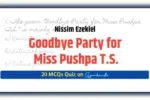
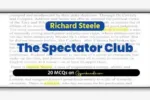
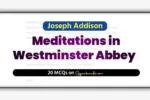
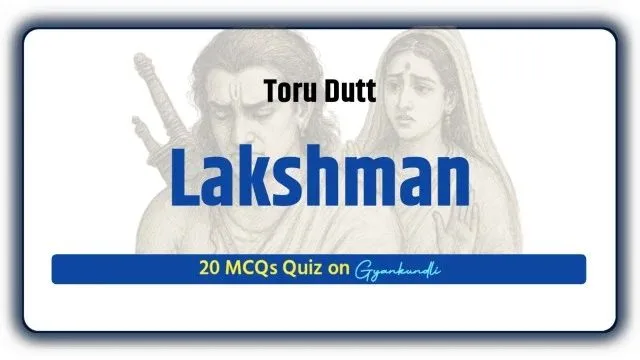
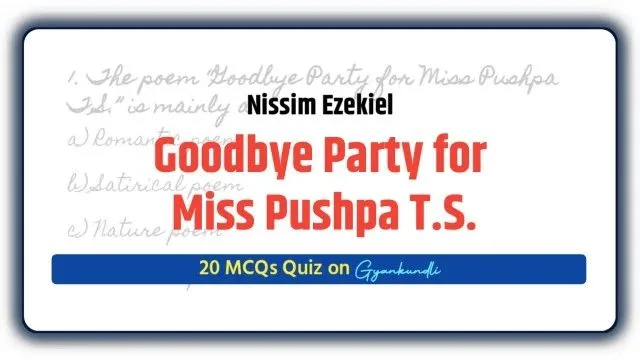
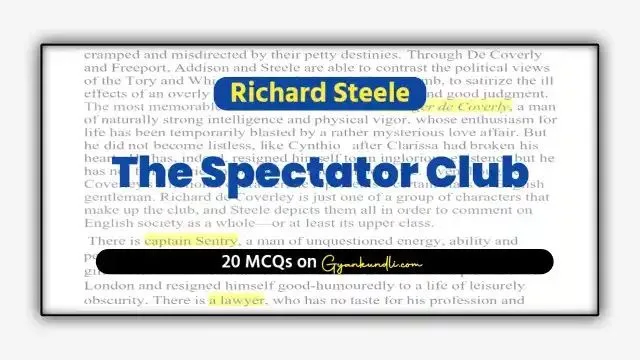
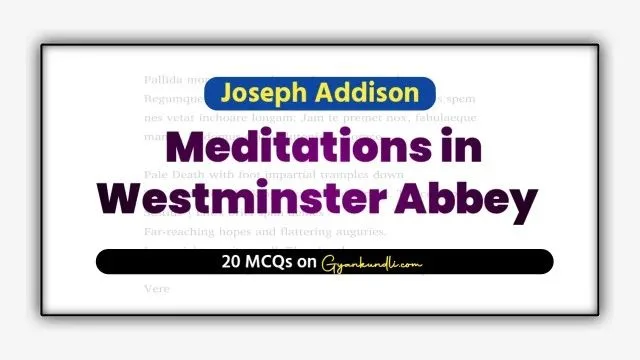
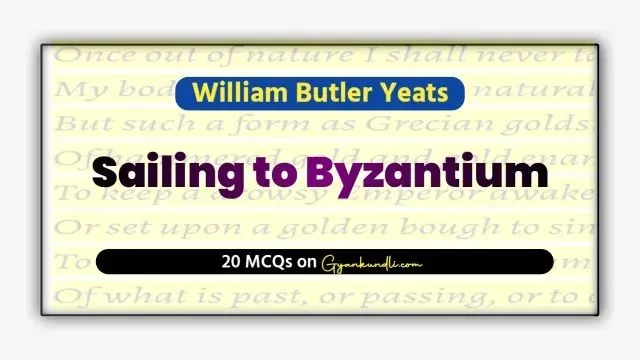
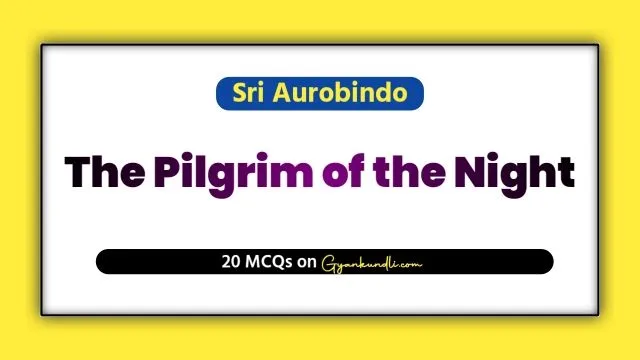




Quiz form me diye hote to shi rhta….btw nice quetions🙏
Old post h update karke re-share kiya h